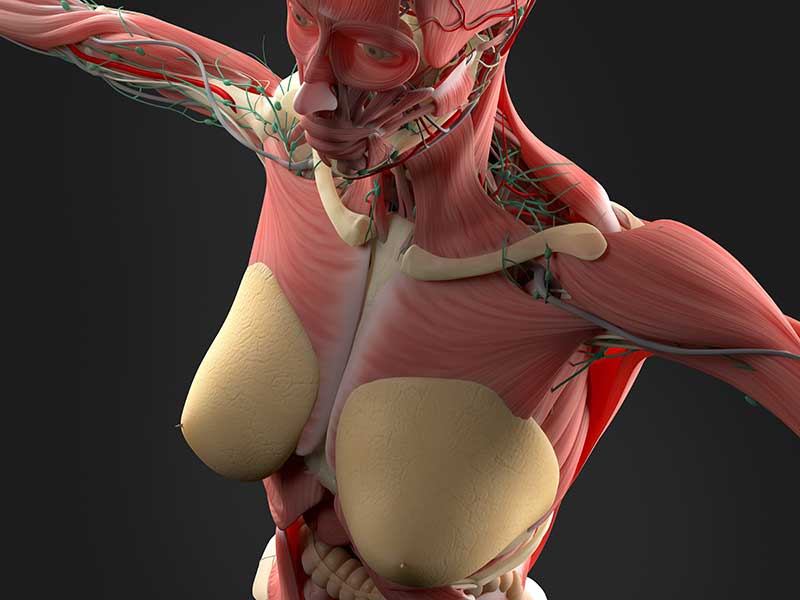
When a woman is pregnant, the last thought on her mind is being afflicted with a life-threatening condition. However, breast cancer is a condition that is not unlikely to arise in pregnant women. A recent study shows that 15 percent of women suffer from breast cancer before they turn 45 years. Naturally, a pregnant woman’s breasts are large during pregnancy, making it difficult and trickier to diagnose cancer. Typically, Physicians perform a breast exam to determine whether a pregnant woman has breast cancer.
What Are Clinical Breast Examinations?
A breast test is a physical examination of a woman’s breast. These examinations are performed alongside mammograms to determine whether a woman has breast cancer. An annual screening mammography is recommended for women beginning at age 40 years. Breast examinations also help diagnose other breast problems such as mastitis (Inflammation and infection of the mammary glands) or fibroadenoma (benign breast lumps). But not only the doctor´s visit is crucial, women should also perform self-examination (once a month) to detect changes more quickly. Approx. 80 out of 100 women who suffered from breast cancer had detected the tumor themselves.
How is a Breast Examination Conducted?
During a breast test, your physician will examine each breast, collarbone area, and the underarm to check for abnormal changes in your breast size, signs of infection or injury like redness or bruising and skin changes. Your doctor may ask you to put your arms above your head or on your hips or to lean forward with your hands pressed together so that the muscles under each breast are taut.
Your physician will palpate your breasts for painful or unusual areas or to check whether you have a dominant lump. A dominant lump is one that is harder, larger or different from the other lumps in your breast.
Your physician will press gently on your breast tissue, one inch below your breast and also around the collarbone. Your physician will proceed to examine your axillary area (armpit) and neck for lymph nodes (swollen glands). He/she may also press your nipple to see whether there is any discharge.
After this test, your health practitioner may show you how to check your breasts for any unusual lumps during and after your pregnancy.
The Results of Breast Examination
 While some breast changes are to be expected during pregnancy, certain changes are common. Pregnancy-related breast changes include:
While some breast changes are to be expected during pregnancy, certain changes are common. Pregnancy-related breast changes include:
– Growth
– Tenderness and hypersensitivity
– Darkening of nipples and areolas
– Darkened veins along your breasts
– Light breast fluid leaks, in particular a yellowish, thick substance known as colostrum
– Larger nipples and areolas
– Raised bumps, small glands on the surface of the areolas
After a full breast test, your breast tissues are normal if the results of the test are as follows:
- The breast tissue, nipples and the area surrounding the breast are normal.
- Breasts have a normal shape and size
- A small part of firm tissue at the lower part of your breast underneath the nipple
- Lumpiness and tenderness in both breasts—this is common for women especially during their menstrual periods
- A milky or clear discharge is released upon squeezing the nipple. This may be because of hormones, breast stimulation, nursing or normal colostrum leaks.
Abnormal breast tissue is indicated by the following:
- Size difference between two breasts
- Breasts behave differently when the arms are lifted
- A thick area or firm lump in one of the breasts
- Changes in the feel or color of your nipple or breast, above and beyond that which is expected during pregnancy. This includes dimpling, wrinkling or thickening.
- A nipple that has sunk into your breast
- A red sore or rash around the nipple
- Warmth or redness over your entire breast. This is mainly caused by an infection such as mastitis or cancer
- A milky or bloody discharge that occurs without any stimulation. This is known as spontaneous nipple discharge
Treating Breast Cancer During Pregnancy
 Breast exams may end with a clean bill of health or in some cases with a diagnosis of cancer. It is estimated, that breast cancer occurs in 3,000 to 5,000 pregnant women. The treatment you receive is dependent on the size and location of your tumor, how far the cancer has spread, your general health and the duration of your pregnancy.
Breast exams may end with a clean bill of health or in some cases with a diagnosis of cancer. It is estimated, that breast cancer occurs in 3,000 to 5,000 pregnant women. The treatment you receive is dependent on the size and location of your tumor, how far the cancer has spread, your general health and the duration of your pregnancy.
An operative therapy should take place as early as possible and can also be done during pregnancy. Chemotherapy, however, should only be considered from the second trimester. Other treatments such as targeted therapy, radiation therapy and hormone therapy could harm the baby and are not used while you are pregnant.
Treatment options become complicated when considering the best plan for the mother and the health of the child. For example, if you are diagnosed with breast cancer during your first trimester and require immediate chemotherapy or if there are any other serious dangers, you may be asked to consider terminating your pregnancy. From the second trimester, however, many doctors opt for chemotherapy.
Clinical breast exams are crucial in checking for the presence of breast cancer or other breast abnormalities. Although it may be difficult to determine abnormal lumps or a tumor in the breast, some symptoms such as a rash around the nipple and spontaneous nipple discharge indicate breast problems. Treatment for breast conditions such as cancer may vary depending on the severity of the condition. It is important to have a thorough consultation with your doctor and possibly also obtain a second opinion. It is advisable to go for regular breast tests during and after pregnancy.


